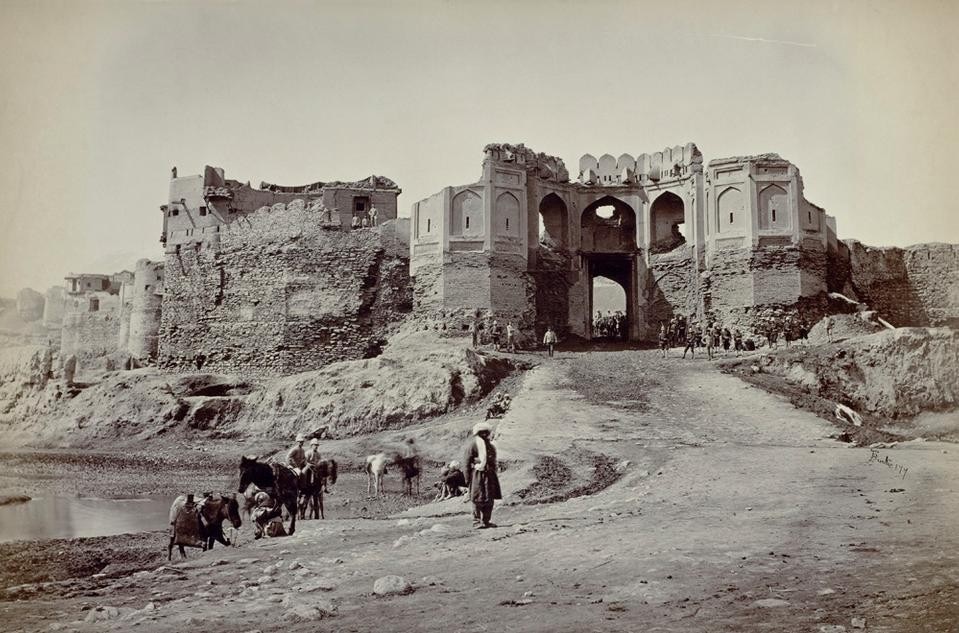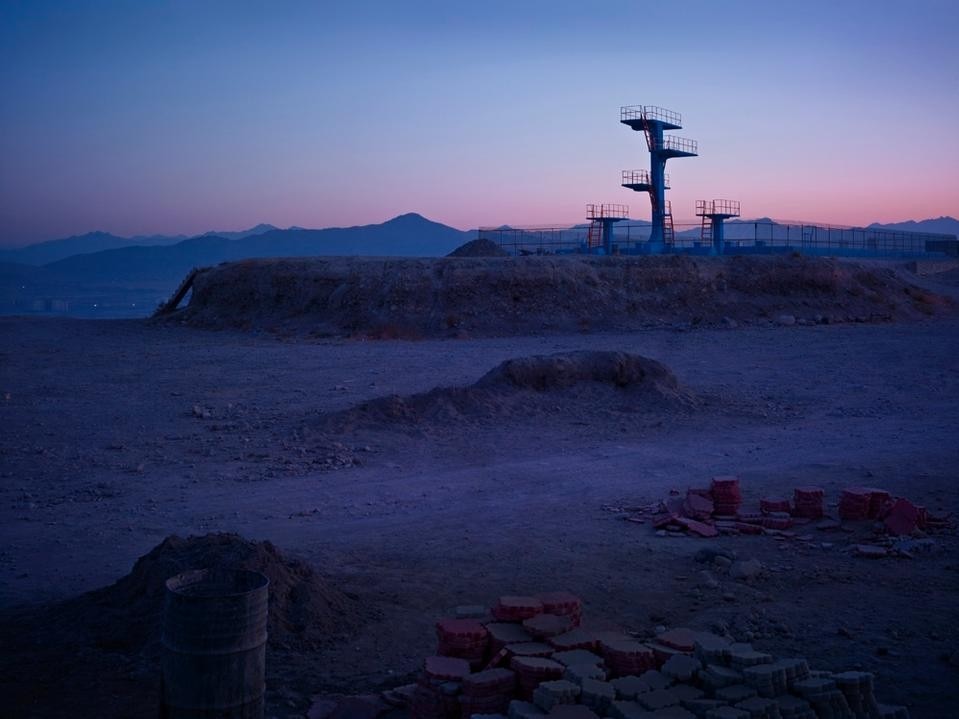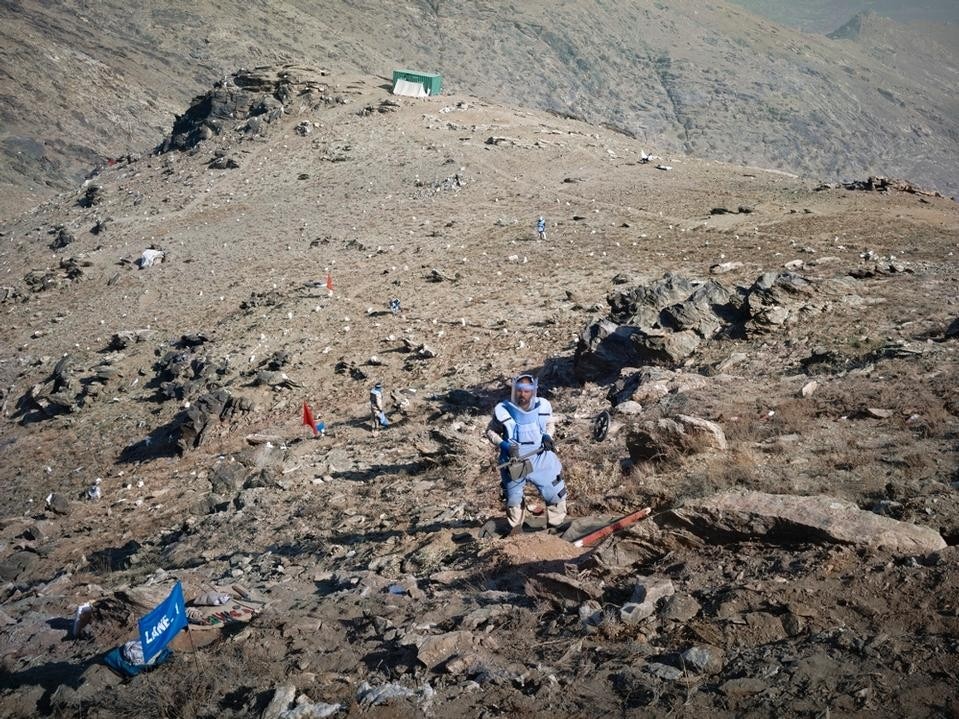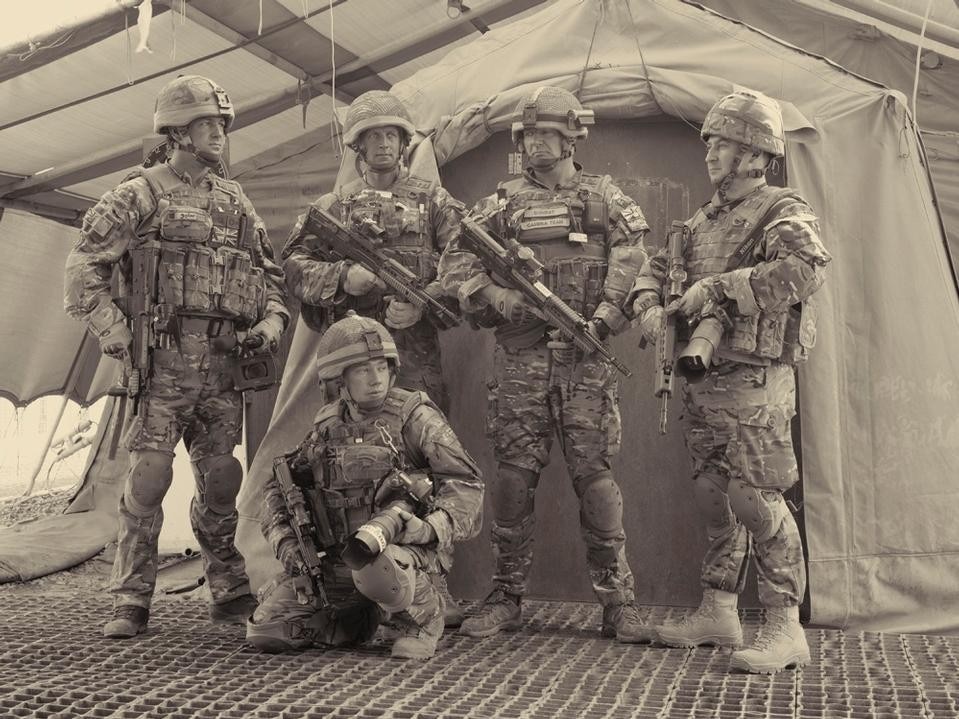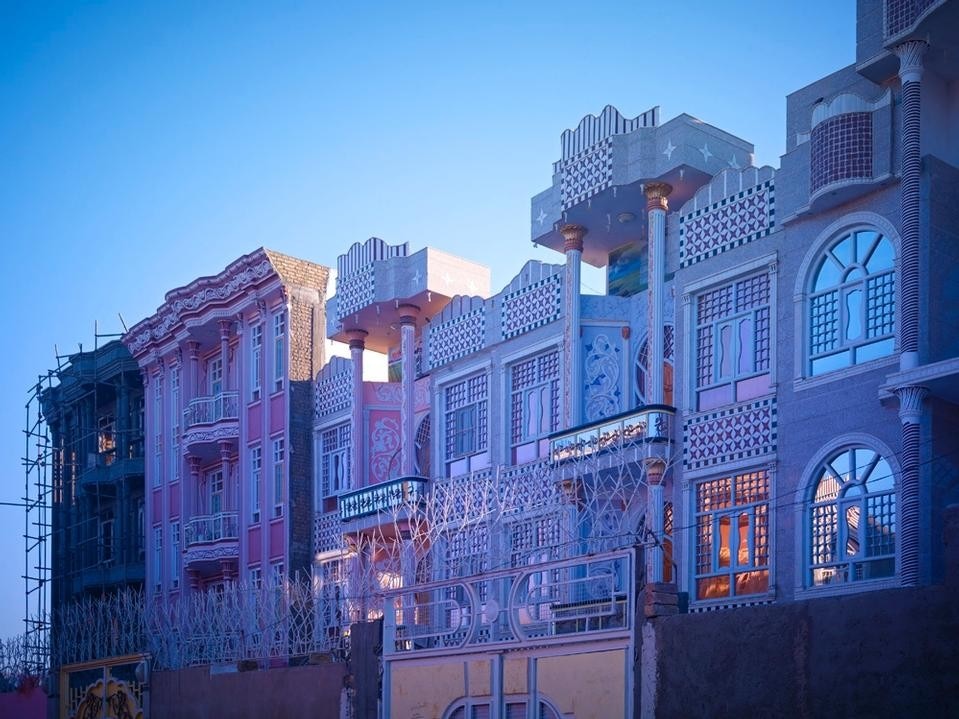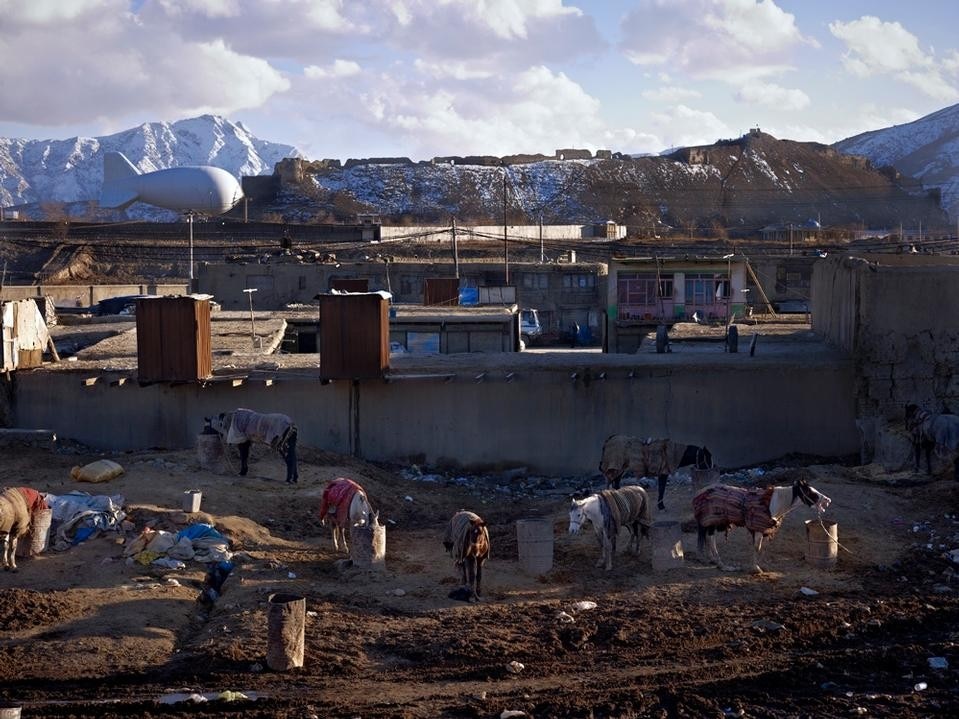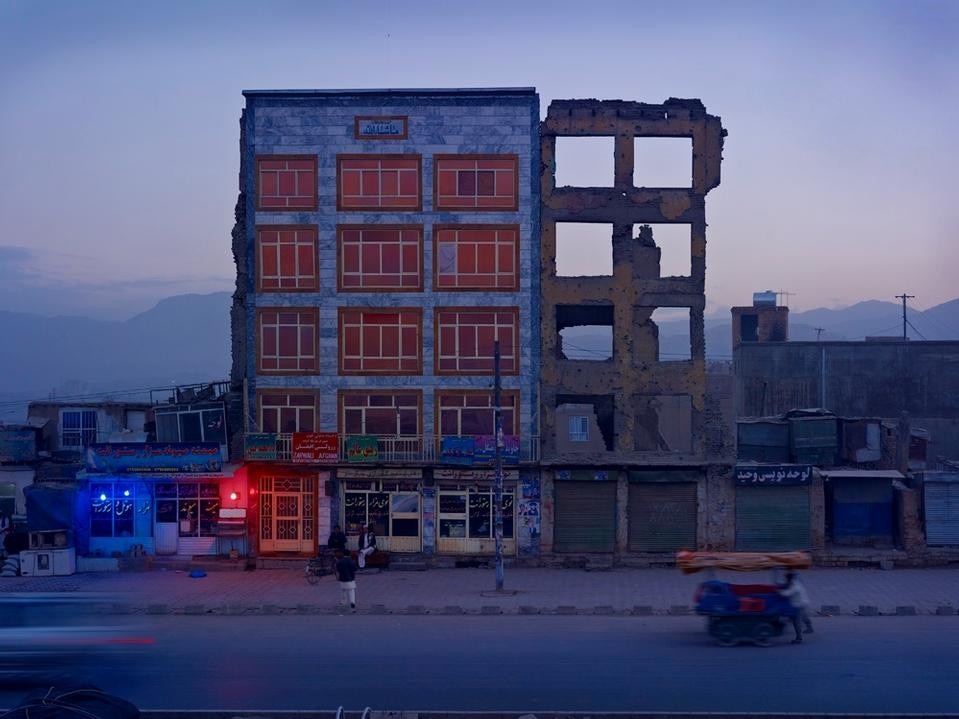Alan Rapp: Tell me how the project Burke + Norfolk came about. Where did you first encounter the work of John Burke?
Simon Norfolk: I was at the National Media Museum [Bradford, UK], where they have a fantastic archive of Burke's photographs. The prints hadn't even been scanned yet, but one of the conservators knew of my Afghanistan work and took me aside and said, Look at this.
There are only 13 or 14 of Burke's albums from Afghanistan in the world. It's not only really beautiful and good photography across a whole series of genres, it's historically critical. I had been thinking for ages about going back to Afghanistan, but not sure how to do so, though I knew definitely not just to rephotograph my older work. It would be a fake idea of progress.
So as soon as I saw this work I knew there was something to talk about. I think he's the greatest war photographer you've never heard of. It would allow me to talk not only about 2011 versus 2001, but also versus 1878 and the story of imperialism. Then you are talking about these great rotational arcs of history. Marx's quote about how history repeats itself first as tragedy, then as farce…it just goes on and on, like a sick joke.
And we don't know how to stop—what could be more farcical than that?

Burke was a social photographer—he would photograph cricket club meetings, parades and the like in the back end of the British Empire, in Peshawar. When the Second Anglo-Afghan War started [in 1878], he applied for a commission to be an official war photographer, but was denied. But because he knew these soldiers he just went anyway, under their wing. And because he didn't have a commission he was free to photograph anything. Military activities yes, but also archaeology, anthropological types, historical sites, there was almost nothing he wouldn't touch. Which was unusual, because war photographers of the time had a very narrow look.
But what's important is that these are the first photos ever made in Afghanistan. Not only incredibly rich in themselves but a total document of an imperial encounter. And it looked nothing like the documents of Empire we know from then—in South Pacific, in New Zealand, Indonesia, all of those encounters were on the beaches, where both parties felt safe.
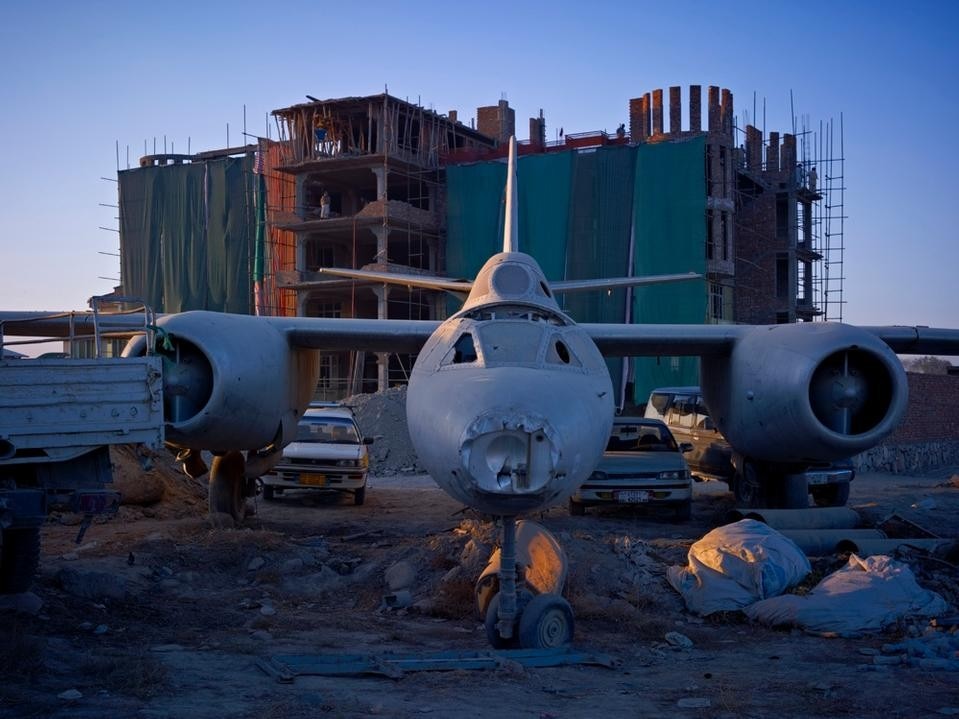
But I think it was Burke's Irishness and the fact that he was a tradesmen, outside of the establishment, that gave him this objectivity and this empathy. The British looked right down their noses at him.
Combat is not where war happens entirely. I'm interested in the economy. The massive injection of money into Kabul, making it a bizarre twisted mutant city.

Well, Burke was a product of empire, one hundred percent. But significant actors were Irish and Scots. Their relationship to the Empire was strange. They had no alternatives, as their economies had collapsed. For many it was fight or starve. Or perhaps the outlook was also, I may be an Irishman, but at least I am not a black man.
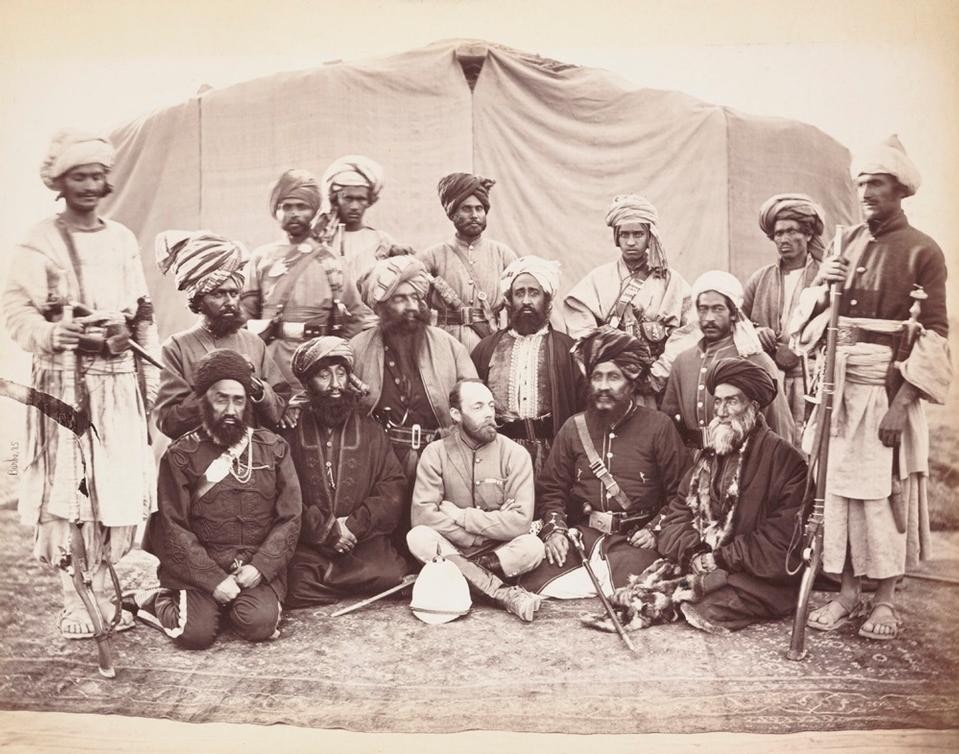
Careful of that word rephotography—it is a very specific thing. Mark Klett was the first to set up the contemporary practice, using the same lenses, same direction of views, sometimes the same cameras as for the original project, yielding very comparative views. So no this isn't rephotography in the strict sense, but in asking myself, What would John Burke have photographed? Not the clichés of combat, but views of the city, the new population. Burke made ethnographic types in Kabul—mullahs, landowners and their laborers, the royal family and the cohort around them. So I tried to get some like those. What you see the city nowadays is that major decisions are not in the hands of the Afghans; they are made in the American Embassy and the mega-NGOs. The health system, infrastructure, the financial structure. The joke about Hamid Karzai is that he is mayor of Kabul—his authority runs to the city limits. Five miles outside you are in Taliban land. It is extremely dangerous.
So I wanted to document the city in Afghanistan today, the lived environment. Real spaces. The population of Kabul, was 500,000 in 2001, now it is 4.5 million in the same space. But there is another city, the instant megacities of the US military, where you can get pizza from a TGI Fridays, but where two miles beyond the wire, you need a mobile armored fortress to get around. Both of these cities are islands, weird freakish islands of western security, wealth and attitudes.

My photography is sort of un-war photography isn't it? I think the first thing is, where do you place yourself as a photographer? If you place yourself in an outpost with 19-year-old soldiers, what do you see? You see what they see, and you are bound to be biased. This is why the military loves the embedding system. You will be taken out to exciting places and report their narrative; all you have to do is apply for the world press award at the end. They're fucking lazy.
Or, you can do it yourself and get out in a city like Kabul and photograph on the streets there. See what the Afghans see, their point of view. It is harder, more expensive and theoretically it is more dangerous. Kabul is a dangerous city, but it is also a place where 4.5 million get up, feed their kids, live, and laugh: I try to see the city the way they do. I'm not saying that I represent their views.
Who said, I don't know who invented the idea of water but it wasn't a fish? I would suggest that if you look at the world through a slot in the sandbags, all you see is a military situation, and a military solution. The real problem in the embedding system is that you only talk to soldiers, so you adopt their viewpoint. The solution is not military. We know that it has to be political, economic, social.
You will not fight your way out of this counterinsurgency. Anyone who thinks you can kill your way to parliamentary democracy, can kill your way to equality for women, is deluded.
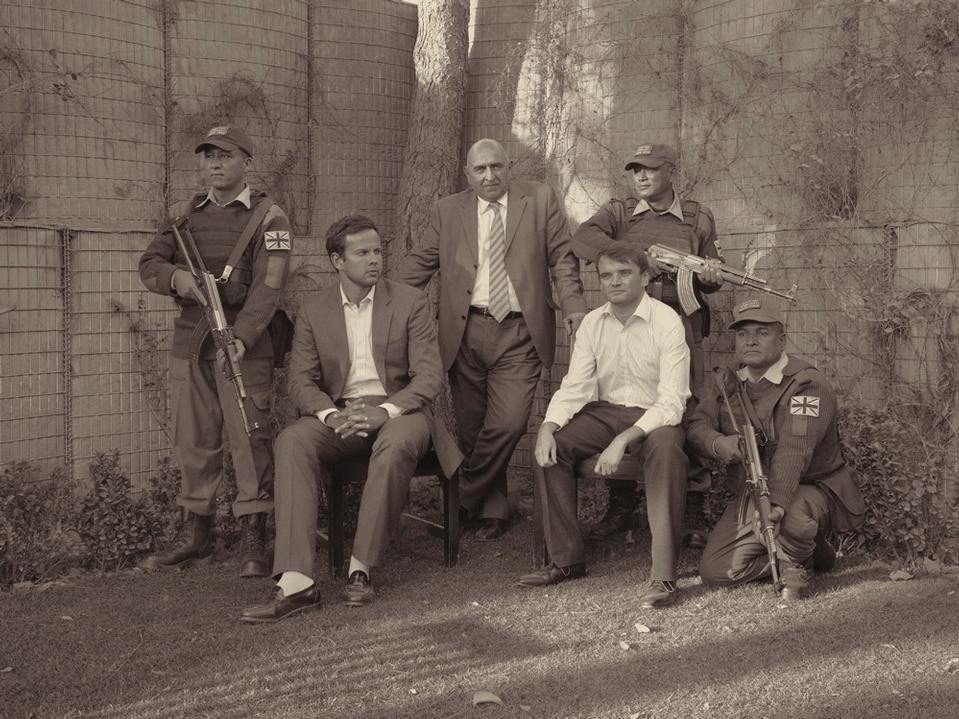

One problem is the technology of war. The cutting edge of how war is fought today is hard to photograph. Combat is not men with rifles shooting. The actual killing is an F-14 dropping a bomb two miles away from wherever you could possibly position yourself. Or a drone piloted in Nevada firing missiles at several countries we are not at war with! How do you photograph that? The most significant act of war last year was the Stuxnet virus on Iran. How do you photograph a virus at work?
Afghanistan is asymmetric—you don't have big battlefield set pieces. So why would you follow around soldiers on patrol? All the boys who want to get hard-ons are chasing around combat patrols, but the first thing your opponent does is go elsewhere. Your asymmetric opponent is assassinating governors or taking over compounds in Maz-ar Sharif, where there are no journalists! Shawn Smith of the Guardian said that in the six months of being there he never saw a single Taliban. No blood no bodies, nothing. And he's a good war photographer! In point of fact hat's what they said about Vietnam too.
The second problem is that combat is not where war happens entirely. I'm interested in the economy. The massive injection of money into Kabul, making it a bizarre twisted mutant city. Making Kabul a symbol of functional Afghanistan goes with the thinking that if you flap your wings heard enough, you could get off the ground. Kabul is only kept in place by a massive injections of cash, because there is no real economy.
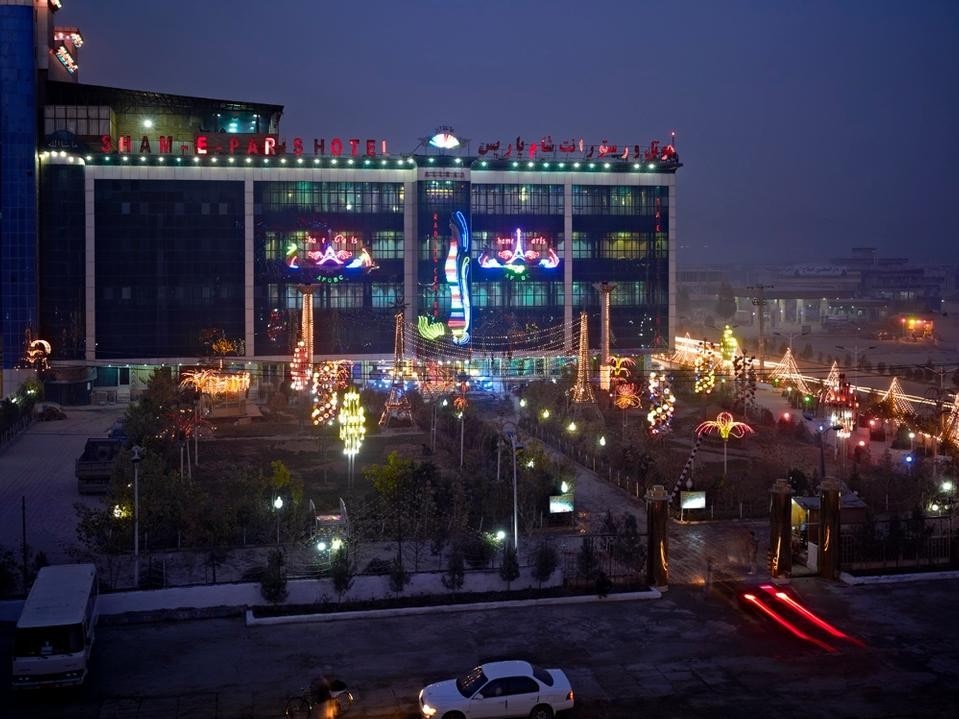
These pop-up cities, these military megabases dropped out of an airplane, these are the new Afghan city. Sewage, post office, police stations dropped out of a C-130 in modular units, without regard to geography, terrain, history—in the middle of nowhere. Camp Leatherneck is in the middle of nowhere precisely so no one will shoot at it!
So I am interested in these bizarre bastard cities. When the US leaves, the security will collapse, the NGOs will leave—and both of these kinds of cities will collapse as soon as that massive injection of cash is gone.

Militaries fill vacuums and make work for themselves. If they don't use their missiles, they lose their missiles. The war on terror is an endless wet dream for the military. There is nowhere on earth we can't invade. Maybe we move sequentially from one war to the other. A lot of equipment boxed up from Iraq wasn't returned to the US, it went back to Afghanistan. Maybe this is a whole genre of city that just moves from place to place, war to war.
